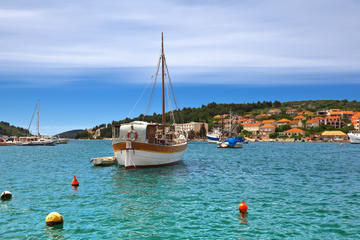Korcula
TIME : 2016/2/22 10:34:21

Korcula
One of many alleged birthplaces of 13th-century explorer Marco Polo, the island of Korčula is one of the largest in the Adriatic and within easy striking distance Dubrovnik by road and sea. Perched on a peninsula and well on its way to becoming the party town of the Adriatic, Korčula Old Town is a mini version of Dubrovnik, with several ornate entry gates and fortified walls punctuated with defense towers built by the Venetians in the 13th century. Within the walls are fine old Gothic and Baroque churches to unearth among the photogenic tangle of alleyways that lead off the main square of Strossmayerov trg, which are all now lined with stylish art galleries, shops, bars and restaurants. Along with a smattering of small museums, the Cathedral of St Mark is the Old Town’s principal attraction, a mellow Venetian-built church with a carved façade guarded by stone lions and an interior full of masterly stone carvings and even a painting by Tintoretto.
Much of the island is covered in cypress, pine and oak trees, with a coastline of ragged cliffs and the occasional pocket-sized beach. To the southeast of Korčula Old Town is the tiny village of Lumbarda, blessed with a brace of tiny sandy beaches, while on the western tip of the island is the workaday town of Vela Luka, chiefly visited for the prehistoric cave dwellings on the southern slopes of the town.
The island of Korčula is a popular overnight stop for yachties sailing the Adriatic; there is an expensive marina in front of the old town, moorings at Lumbarda and free anchorage off the archipelago islet of Badija, with fine views of a refurbished Franciscan monastery.
Practical Info
Korčula is accessible by the Jadrolinija ferry line from the mainland towns of Orebić, Dubrovnik, Split and Rijeka.
